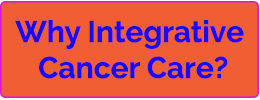Everyday, most people are exposed to hundreds of toxins through personal care products. These toxins are harmful and can be avoided through toxin-free choices. Everyone needs to apply these lifestyle choices, especially cancer patients and cancer caregivers.
Removing Exposures from Personal Care Products
Personal care products with any of the following ingredients should be disposed of and replaced with safe, clean, toxin-free alternatives. Take this list and go through your bathroom and other parts of your home. Leave no label unread—shampoos, conditioners, toothpastes, skin care products, deodorants, and anything else. Educate yourself about toxin-free personal care and other clean products at Clean Non-Toxic Products.
Dangers of Cosmetics
The cosmetics industry is self-regulated and therefore can use any ingredients and not label them due to a 1938 Food and Drug Administration (FDA) law. Tests indicate that many ingredients used by the cosmetic industry are toxins or contain toxic byproducts. People can be exposed to over 200 different chemicals daily through their personal care regimens.
Health Threats
Health threats listed under individual ingredients were identified through tests in laboratories, animals, and people. More testing has been conducted in laboratories and animals than in people. Less information is available about harm from multiple exposures and health effects over long periods of time. Due to the current evidence about a threat of harm to human health and the environment from these ingredients, precautionary measures must be taken. Due to the ongoing, widespread, and currently unregulated use by industry, the responsibility is yours to stop using products with unsafe ingredients.
Study Results
The National Institute of Occupational Safety and Health (NIOSH) analyzed 2,983 chemicals in personal care products.
- 884 were toxic
- 778 caused acute toxicity
- 314 caused biological mutation
- 376 caused skin and eye irritations
- 148 caused tumors
- 218 caused reproductive complications
Ingredients to Avoid
- 1,4 Dioxane
- Alcohol, Isopropyl, SD-40
- Aluminum
- DEA (diethanolamine), MEA (monoethanolamine), & TEA (triethanolamine)
- FD&C Color Pigments
- Fragrances
- Imidazolidnyl Urea & DMDM Hydantoin
- Mineral Oil
- Parabens (Alkyl Hydroxy Parabens- Alpha Hydroxy Benzoate- Methyl,- Propyl-, Butyl- and Ethyl-Parabens)
- Petrolatum
- Polyethylene Glycol (PEG)
- Propylene Glycol (PG) & Butylene Glycol
- Sodium Lauryl Sulfate (SLS) & Sodium Laureth Sulfate (SLES)
- Sodium Hydroxide
- Talc
- Triclosan
1,4 Dioxane
- Used in many personal care products such as shampoos, deodorants, toothpastes, and mouthwashes
- Appears to promote cancer
Alcohol, Isopropyl, SD-40
- Used in many personal care products
- Drying, irritant that destroys skin’s moisture and immune barrier
- May cause headaches, dizziness, flushing, mental depression, nausea, vomiting, and even coma
- Made from the same petroleum derivative in antifreeze and shellac
Aluminum
- Used in many personal care products such as deodorants and cosmetics
- Stresses the nervous system
- Causes brain and bone disease in children
DEA (diethanolamine), MEA (monoethanolamine), & TEA (triethanolamine)
- Used in many personal care products, and especially those that foam
- Disrupts hormones and can result in cancer-causing nitrates and nitrosamines
- Restricted in Europe due to cancer promoting effects, but used in the U.S.
- Repeated use of DEA-based detergents increased kidney and liver cancer
- Risk is significantly increased for children
- DEA and MEA are usually listed on the ingredients label with other compounds such as Cocamide DEA or MES and Lauramide DEA
FD&C Color Pigments
- Used in many personal care products as color
- Synthetic colors derived from coal tar
- Absorption of some colors may inhibit oxygen in the body and result in death
- Promotes cancer in animals
Fragrances
- Used in many personal care products and labeled as fragrance without specifying specific chemicals
- Contains at least about four thousand toxic ingredients that promote cancer
- May cause dizziness, allergic reactions, headaches, skin discoloration, vomiting, violent coughing, and skin irritation
- Impacts the nervous system and may cause hyperactivity, irritability, inability to cope, depression, and other behavioral changes
Imidazolidnyl Urea & DMDM Hydantoin
- Used in many personal care products as a preservative
- Releases formaldehyde that may cause joint pain, skin reactions, allergies, depression, headaches, chest pains, ear infections, chronic fatigue, dizziness, loss of sleep, irritation of the respiratory system, heart palpitations or asthma, weakening of the immune system, and cancer
Mineral Oil
- Used in many personal care products
- Petroleum by-product that creates a coated layer on the skin similar to plastic wrap and clogs pores
- Interferes with skin’s ability to eliminate toxins and promotes the accumulation of toxins
- Diminishes skin function and cell development that may cause premature aging
Parabens (Alkyl Hydroxy Parabens- Alpha Hydroxy Benzoate- Methyl,- Propyl-, Butyl- and Ethyl-Parabens)
- Used in many personal care products as a preservative to inhibit microbial growth and extend shelf life
- May cause allergic reactions and skin rashes
- Found in human breast cancer tumors
Petrolatum
- Used in many personal care products
- A petrochemical that contains two well known cancer promoting agents—Benzo-A-Pyrene and Benzo-B-Fluroanthene
- Disrupts the body’s natural ability to moisturize its own skin
Polyethylene Glycol (PEG)
- Used in many personal care products
- Penetrates skin and weakens protein and cellular structure with systemic consequences such as brain, liver and kidney abnormalities
- Also in oven-cleaners
Propylene Glycol (PG) & Butylene Glycol
- Used in many personal care products to dissolve oil and grease as well as thicken
- Processed through skin and hinders basic functions resulting in some systemic consequences such as kidney, liver, and brain abnormalities
- The Environmental Protection Agency (EPA) requires factory workers to wear protective clothing when producing products with these substances
- Also in anti-freeze, oven cleaners, and other products
Sodium Lauryl Sulfate (SLS) & Sodium Laureth Sulfate (SLES)
- Used in 90 percent of all foaming personal care products
- Referred to as “the most dangerous of ingredients in personal care products” by the Journal of the American College of Toxicology
- SLS can remain in the body for up to five days and maintain residual levels in the heart, lungs, liver and brain
- SLS may damage the skin’s immune system and can be transformed into nitrosamines, a potent class of cancer promoting agents
- Young eyes may not develop properly if exposed to SLS
- Products that list this ingredient with the phrase “comes from coconuts” are still toxic
- Also in garage floor cleaners and engine degreasers
Sodium Hydroxide
- Used as a recent addition to personal care products
- The warning label on some products with sodium hydroxide refers to it as a poison and may cause blindness too
- Also in drain cleaners
Talc
- Used in personal care products such as body powders, cosmetics, deodorants, soap, and more
- Appears to cause tumors in the ovaries and lungs
- Talc particles similar to asbestos
- Also in pesticides, antacids, paints, chalk, crayons, insulating materials, and more
Triclosan
- Used as an anti-bacterial chemical in detergents, dishwashing liquids, soaps, deodorants, hand soaps, creams, lotions, cosmetics, and even toothpaste
- EPA identifies triclosan as a pesticide
- Contains a chemical structure similar to dioxins, PCBs, and Agent Orange
- Designated as a chemical suspected of causing cancer in humans
- Disrupts hormones and damages many organ functions
- Considered a persistent organic pollutant that is stored in body fat and then hard to eliminate
- May contribute to the emergence of “super bugs” that it cannot kill
Other Toxic Ingredients
This list does not include all additional toxic ingredients.
- Alpha Hydroxy Acids (Glycolic, Lactic, AHA)
- Benzophenone
- Benzalkonium
- Chloride
- Diazolidinyl urea
- Polyquatemiums
- Polyvinylpyrrolidone
- PVP/VA Copolymer
- Retinyl Palmitate
- Stearalkonium Chloride
Learn about toxin-free personal care and other clean products at Clean Non-Toxic Products.
For More Information
- AARP Poison’s A-Z
- Agency for Toxic Substances & Disease Registry
- Collaborative for Health and the Environment
- Environmental Protection Agency
- Environmental Working Group
- Environmental Working Group’s Cosmetic Safety Database
- The Hundred-Year Lie: How to Protect Yourself from the Chemicals That Are Destroying Your Health by Randall Fitzgerald





